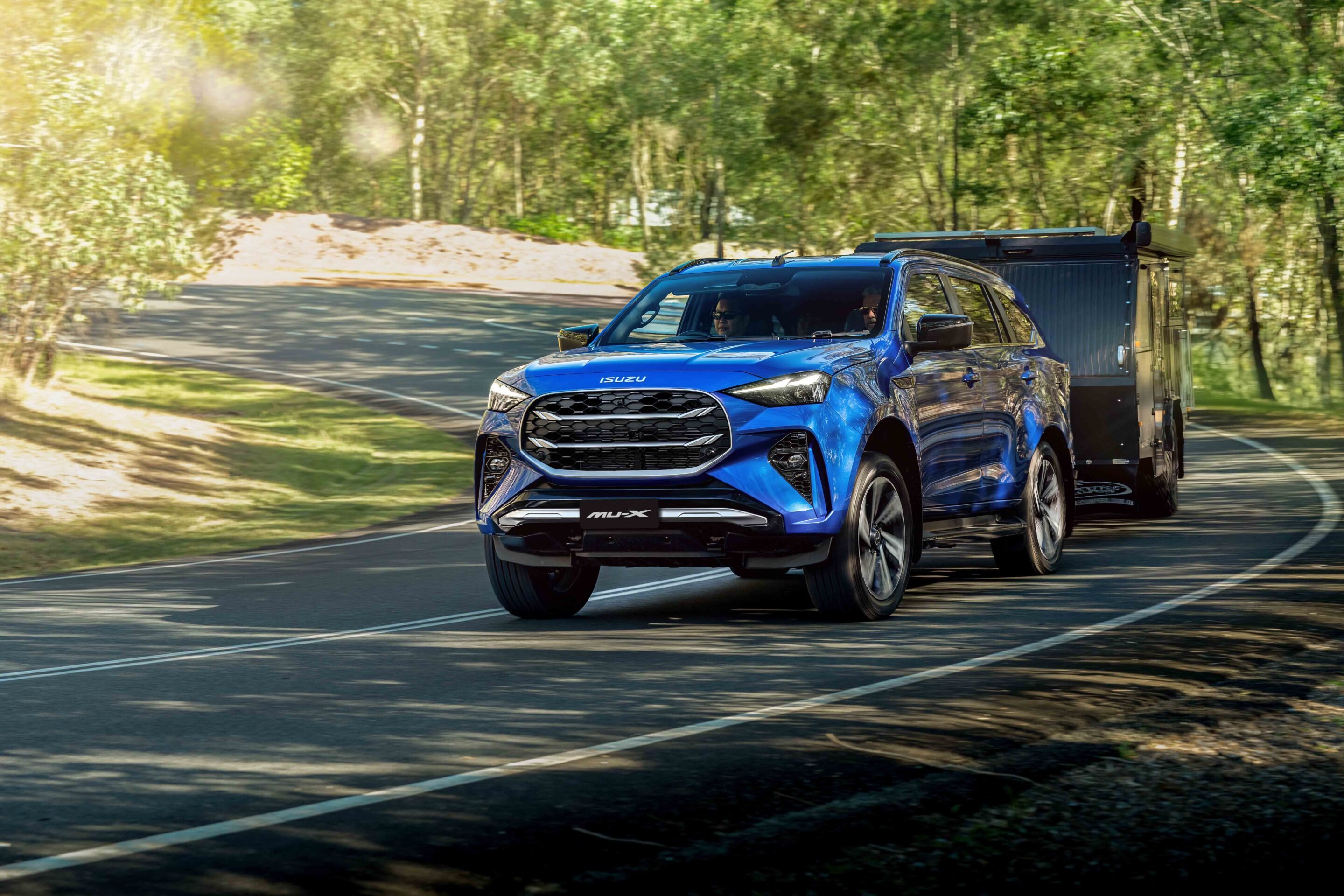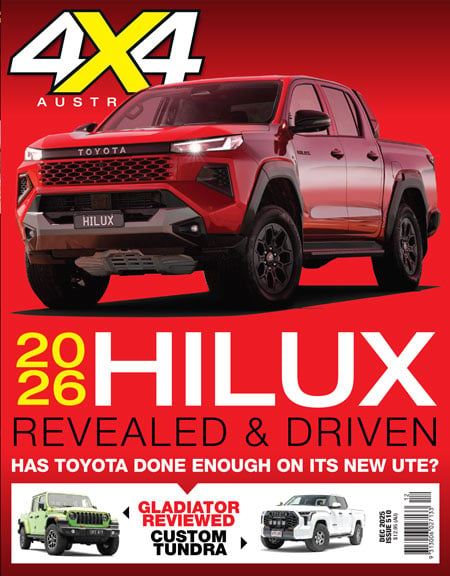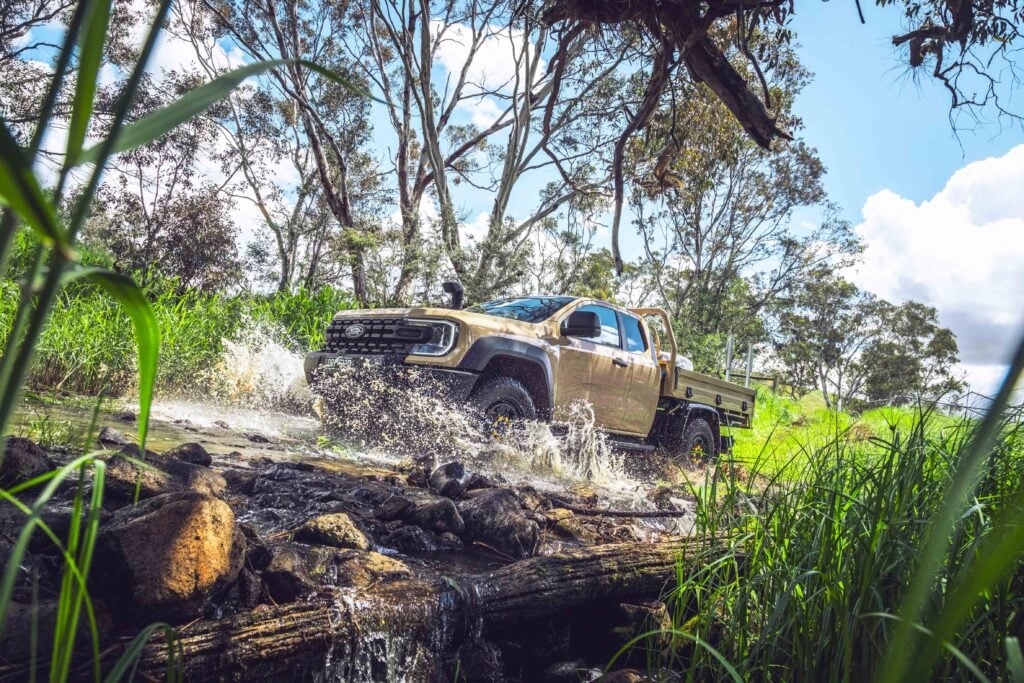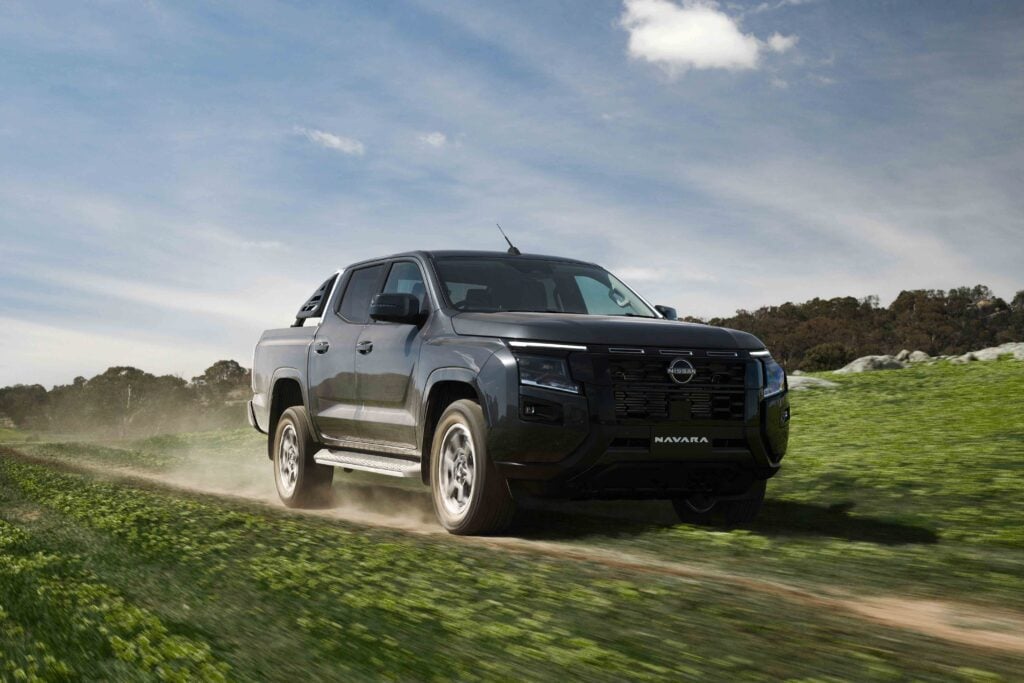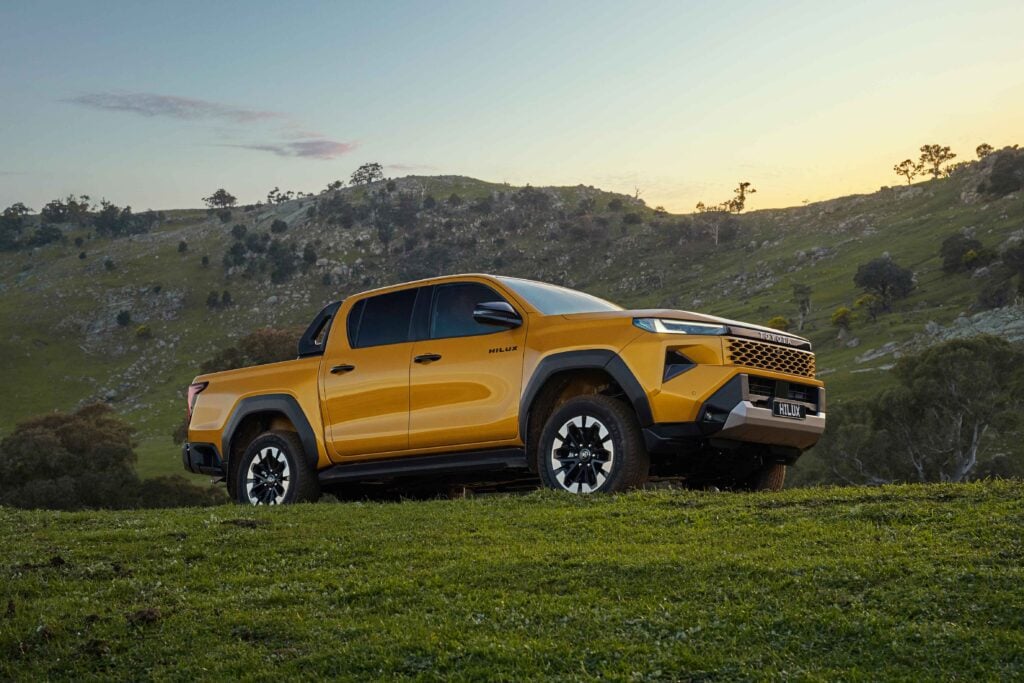Isuzu Ute Australia (IUA) recently rolled out a new 2.2-litre engine and eight-speed automatic gearbox, to be offered alongside its proven 3.0-litre ‘4J’ in D-MAX and MU-X models, and we got to drive it.
The long and short of it is that the new Euro 5 RZ4F engine replaces the underwhelming 1.9-litre unit it’s based on, with the redesigned powerplant producing a claimed 120kW/400Nm (up 10kW/50Nm), and it’s backed by a new Aisin-sourced eight-speed auto. It also gets fuel-saving technology like Idle Stop Start (ISS) – but the 3.0-litre now gets that, too.
In listening to its customers, IUA has given the 2.2 models a full 3500kg braked towing capacity, compared to the 3000kg rating that hamstrung the 1.9 models, making the new powertrain as capable as its big brother on paper.
Customers will pay for the new engine and ’box though, with the 2.2-litre models priced around $1500 higher than their 1.9-equipped counterparts, and the price hikes extend to the 3.0-litre models adding between $1500 and $2500 to sticker prices across the range.
The cheapest 4×4 D-MAX is now the SX 3.0 single-cab chassis at $46,200 (up $1500), and the cheapest dual-cab is the SX 2.2 at $50,700, while the entry-level 4×4 MU-X LS-M 2.2 starts at $55,900 (up $1500). The budget manual ’box models are also gone for good, with IUA offering only self-shifters from here on in.
This is the price we’re all paying for the New Vehicle Efficiency Standards (NVES), as manufacturers fight to avoid hefty fines by bringing CO2 emissions down. The new engine spits out 174g of CO2 per kilometre in the D-MAX and 177g/km in the MU-X, so it comes in below the 2025 threshold of 210g/km for light-commercial vehicles. Next year that threshold drops to 180g/km and by 2027 it will drop again to 150g/km, meaning at best this 2.2-litre engine buys IUA a year or two, before it’ll be faced with hefty fines for every vehicle sold.
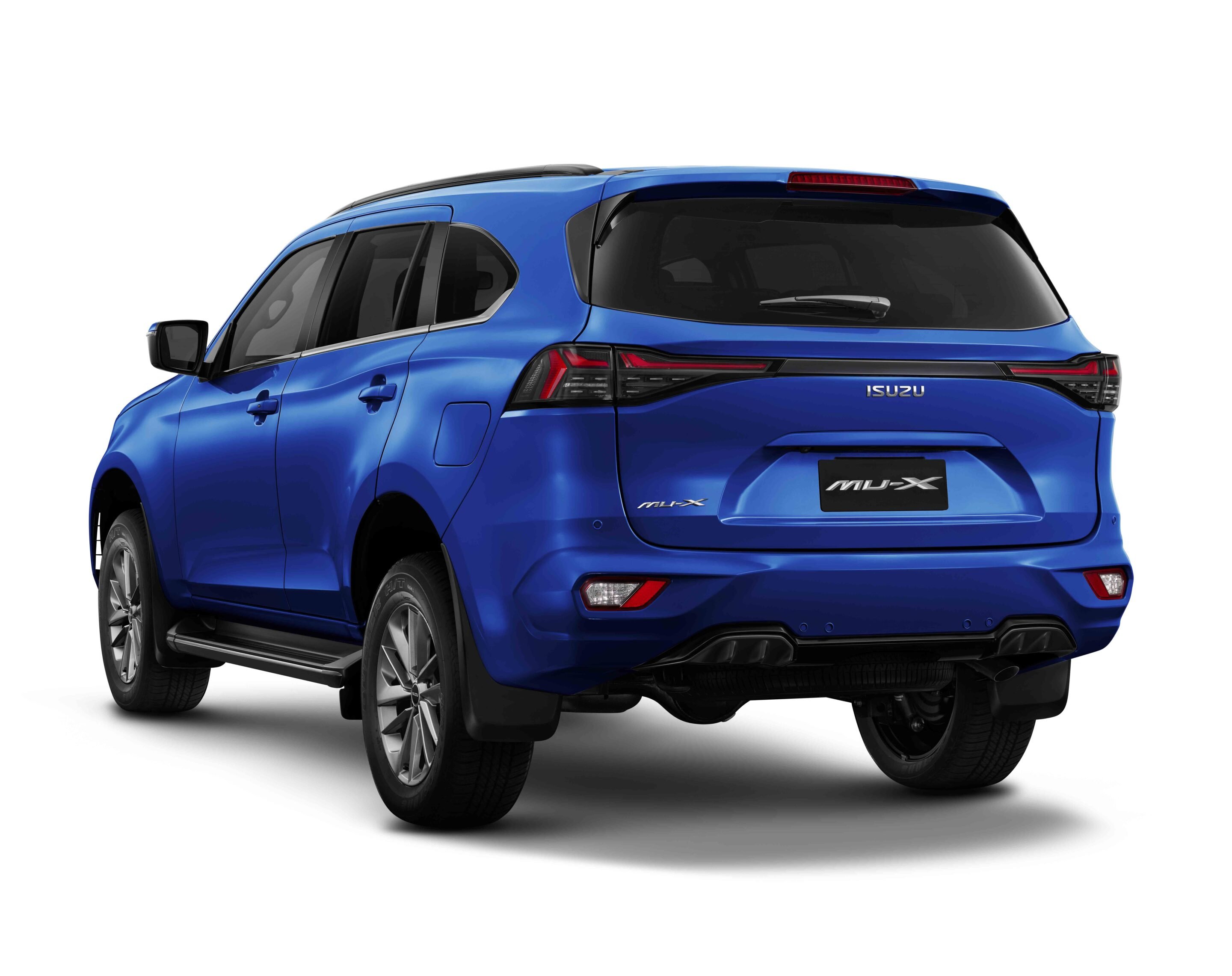
As other brands like Toyota and Ford pursue hybrid technology in a bid to clean up their diesel models, Isuzu appears to have abandoned its mild-hybrid system, which featured – in very limited numbers – on its now-scrapped 1.9-litre engine in Thailand.
We weren’t able to get anyone ‘in the know’ at IUA to confirm or deny the likelihood of a new mild-hybrid system for the 2.2-litre engine, and none would outline whether hybrid technology is planned for the brand’s Australian models in the future. Nor would executives elaborate on the previously announced electric D-MAX model, suggesting that for the foreseeable future none of their models will feature electrified systems of any type.
Then there’s the fact the new 2.2-litre engine is only Euro 5, despite IUA’s truck-making sister brand Isuzu Trucks offering Euro 6 engines across its entire range of light- and medium lineup (and soon heavy-duty models too). Isuzu Trucks has even managed to get its 4JZ1 – the commercial vehicle version of the 3.0-litre owners have come to love – to be Euro 6 compliant, albeit at the expense of requiring AdBlue.
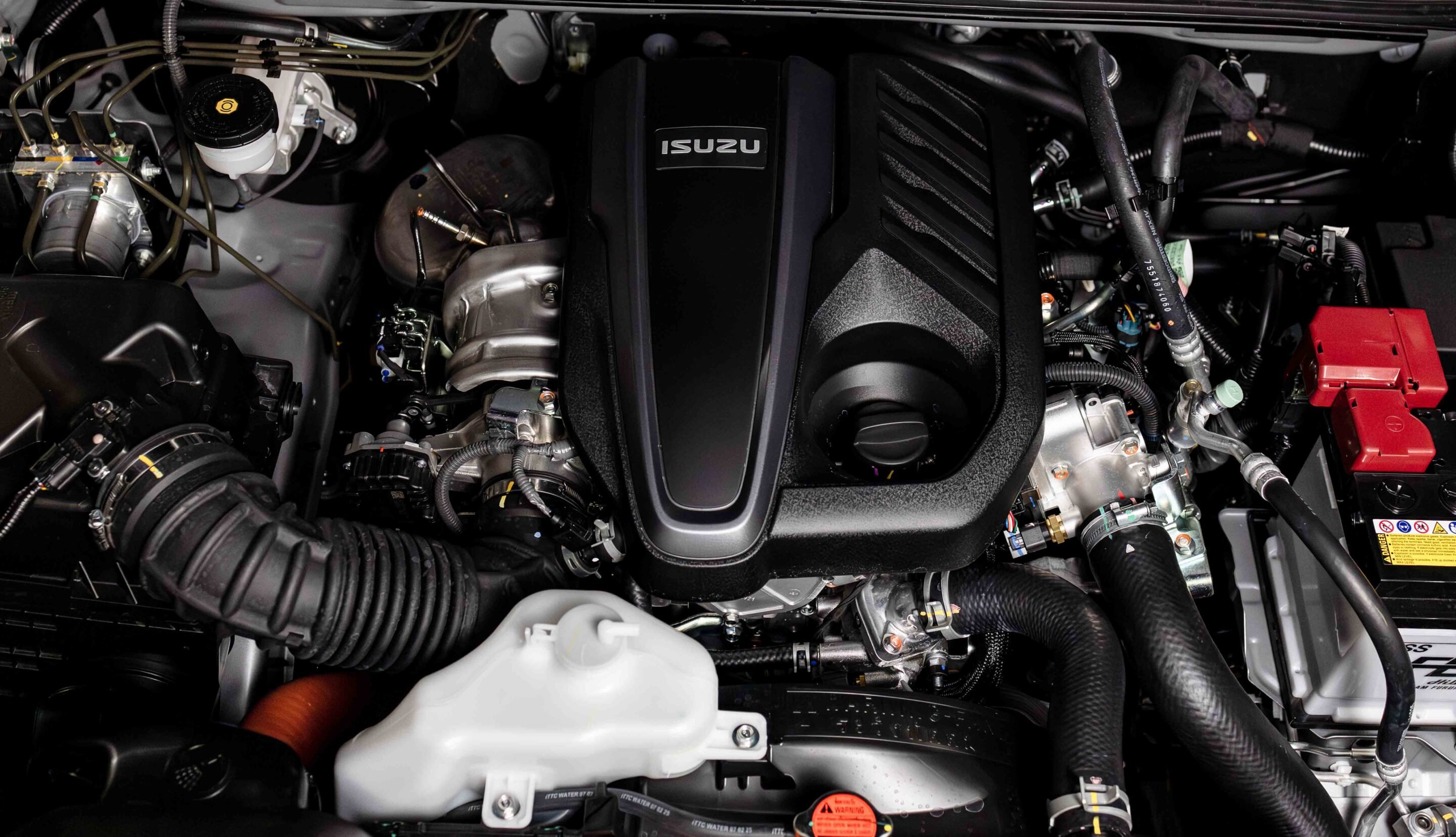
“In terms of the Euro 6 engines there (at Isuzu Trucks), it’s a different ADR category,” explained IUA Senior Product Manager, Aaron Carty, when asked about the Euro 6 4J engine. “So for us, we’re striking the balance between what the consumer wants and likes, versus compliance and regulation. So when the time comes that we have to be Euro 6, we’ll be Euro 6, but right now it’s more cost-effective to provide a vehicle that’s compliant to the current regulations.”
When asked if the 3.0-litre models will receive the eight-speed automatic, senior executives at IUA ruled it out, calling into question the engine’s future here. Even with the new stop-start system, IUA confirmed that the 3.0-litre engine emits 187g/km of CO2, and the MU-X is worse at 200g/km, meaning next year’s 180g/km threshold will likely hurt the 4J.
Confusion about IUA’s future models aside, they gave us the keys to a handful of 2.2-equipped D-MAX and MU-X variants and told us to drive from the Royal Pines Resort on the Gold Coast, out to Swan Gully 4WD Park for some testing – a proposition we were quite okay with.
How does it drive?
As an owner of a 3.0-litre D-MAX, I went into this test with low expectations, especially after rather disliking the 1.9-litre engine on the handful of occasions I drove it – from its strained power to the clattery racket it made.
But the 2.2-litre is a very different beast, quiet and refined, and the eight-speed behind it is a serious step-up from the six-speed that’s starting to feel a little bit dated and isn’t without its quirks – like the inconsistent converter lockup and gear selection.
This new eight-speed ’box is decisive in its gear choices, quick to change and feels like it has a tighter lockup when on and off the throttle. The six-speed works with the 4J, using the engine’s torque ride the ratios, but it would without a doubt have let the smaller engine down, as it did for the 1.9-litre.
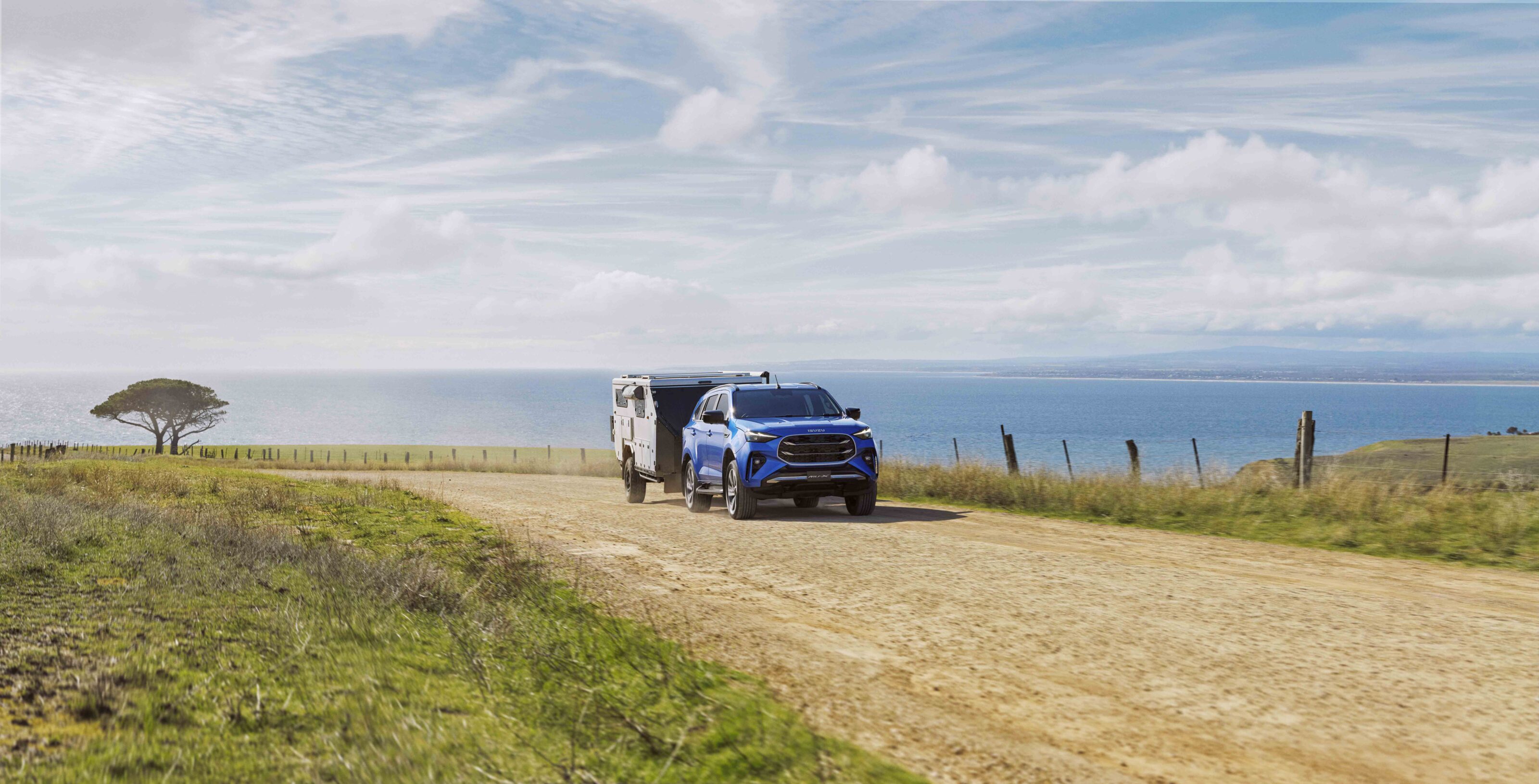
“I think the 1.9-litre engine might have highlighted some of the six-speed’s weaknesses, and vice versa, even though that gearbox works so well with the 3.0-litre,” Aaron told us, when discussing the move to an eight-speed transmission.
The new gearbox goes a long way in compensating for the 50 missing Newton metres, and during part-throttle, around-town use the lack of grunt is barely perceptible, even for someone who’s in a 3.0-litre almost everyday. Where the six-speed will hold a gear, relying on the 4J’s propensity to lug, the eight-speed drops a cog but to its credit does so quickly and without confusion. Owners who drive mostly around town are probably going to prefer the eight-speed, because it’s smoother, quicker and more efficient.
Another benefit of the new ’box is that it offers six low-range gears compared to four in the six-speed transmission, which could be felt when crawling up and down some of the rocky sections around Swan Gully. The six-speed has a tall first gear that can run away a bit downhill, but this transmission feels pretty damn good everywhere.
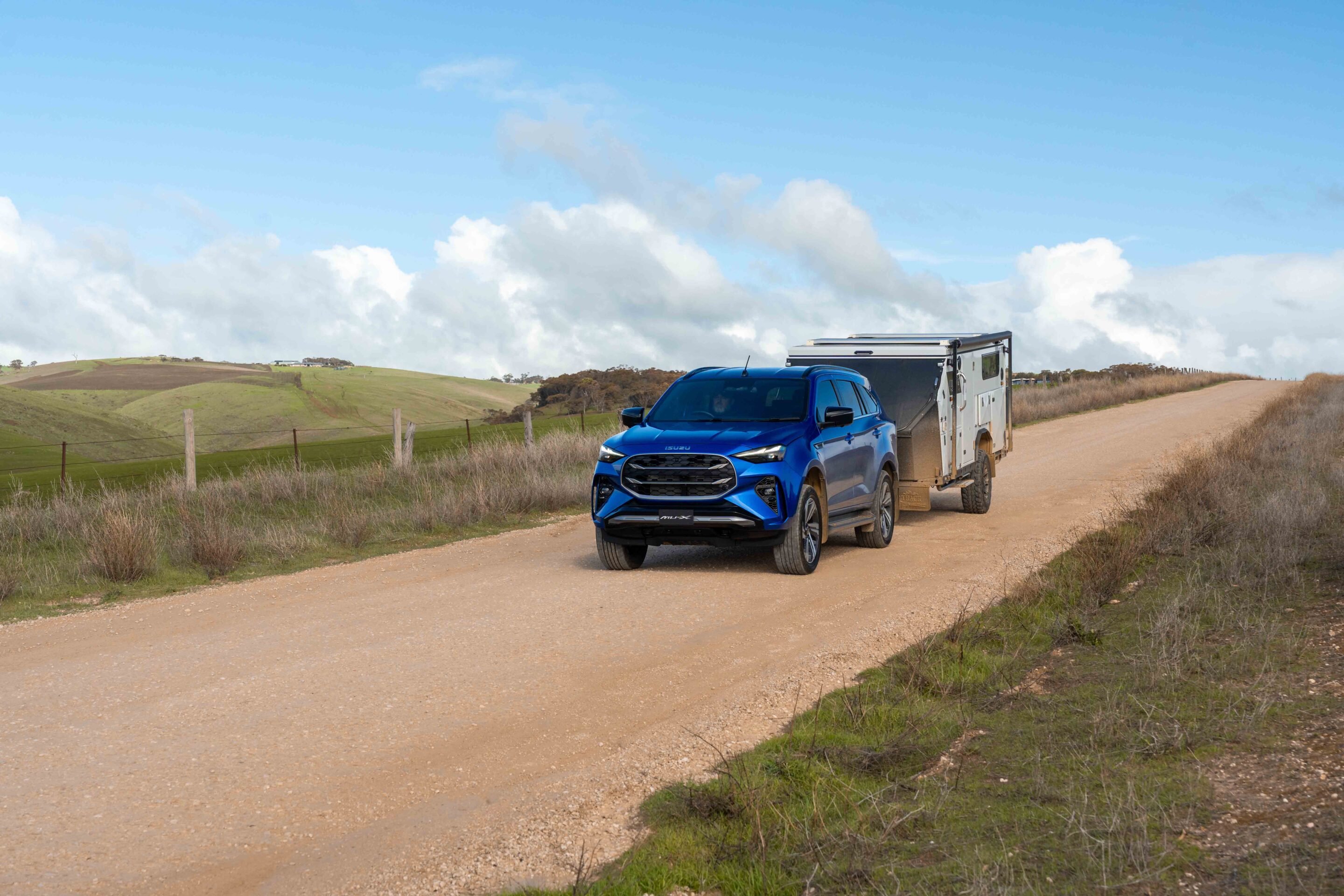
Manually hold gears, or tow, and the downrated power becomes noticeable, as I soon discovered. I was given the chance to tow a two-tonne Lifestyle Campers off-road camper behind a 2.2 D-MAX for the final stretch of on-road driving, as well as during some light off-road work at Swan Gully, and that’s when this engine started to feel a little bit underwhelming.
Up hills or when accelerating from a stop, it was a foot-flat affair to keep the little engine singing. Ideally, we’d like to put three or more tonnes behind it, to see if it can handle it, but if you’re pulling those kinds of weights you probably aren’t interested in a downsized engine.
Once back in an unladen MU-X, it was time to tackle the gnarlier trails. I really couldn’t feel much of a difference, compared to the 3.0-litre models, with the gearbox making good use of the engine’s power. Then there’s the excellent Rough Terrain Mode, which dials the braked traction control (or nerd lockers) to 11, making it almost boring to wheel one of these – it’s that good.
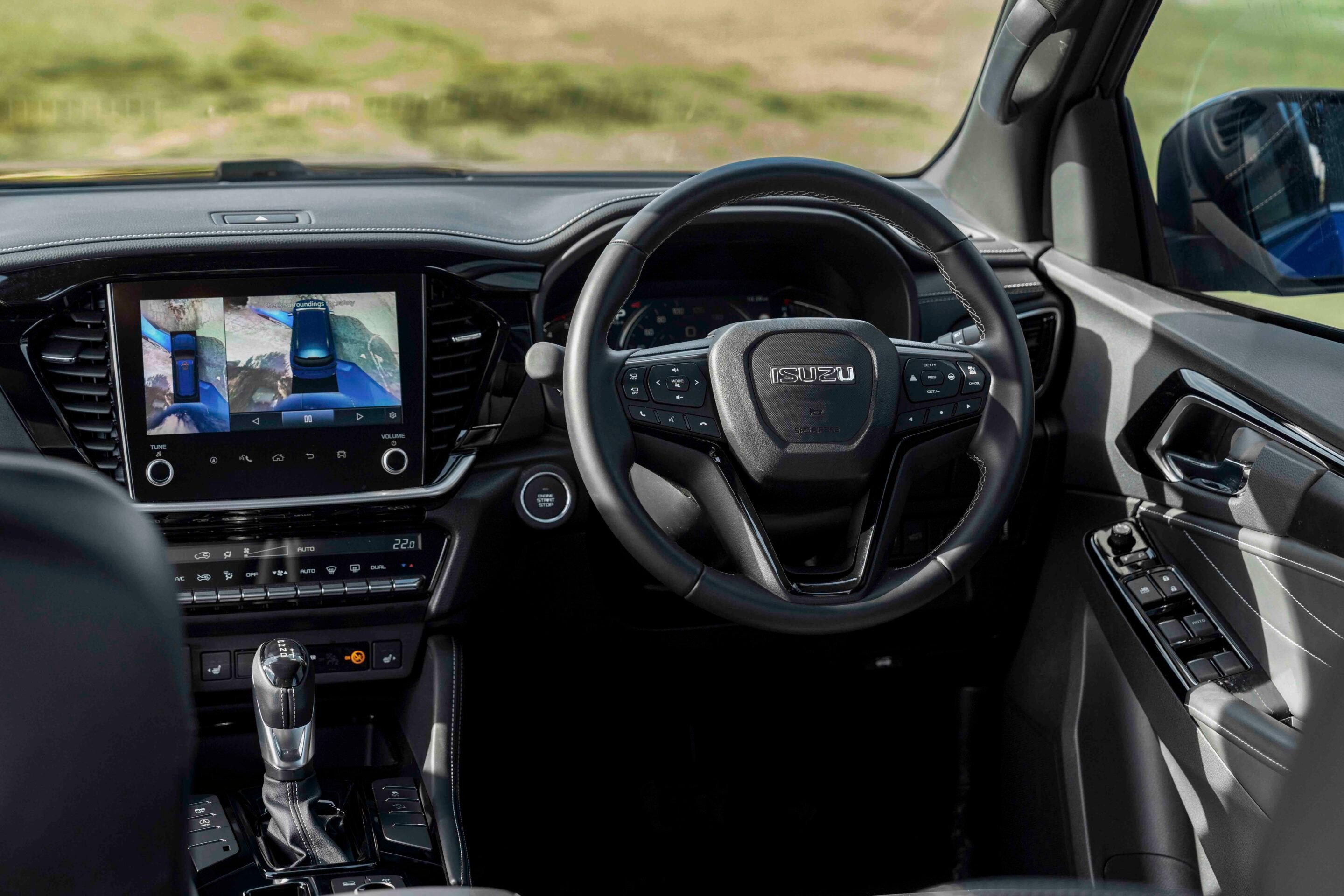
IUA claims the new engine sips 6.6L/100km in the D-MAX and 6.9L/100km in the MU-X, beating out even the 1.9-litre’s drinking habits by 0.3-0.9L/100km. While the gearbox probably contributes, it’s the use of an Idle Stop Start (ISS) system that really brings the consumption down. Now, I’m not a fan of stop-start, both because it’s hard on cold engines, batteries and starter motors, but also because it’s annoying in traffic. In summer it’s most annoying, because it shuts the A/C off.
Credit where it’s due, though, the Isuzu system is smart. It won’t shut down the engine if it’s cold (or hot), if there’s steering lock applied, if the air-con is turned right up, or if the battery temp is outside of its optimal range. As I discovered, the system also turns off when in low-range. Isuzu has fitted a larger battery to compensate for the extra starts, and you can always turn it off with the press of a button. Once I’d tried the system out, that’s exactly what I did.
As far as overall vehicle dynamics, the new models steer, stop and drive the same as their larger engined-siblings on- and off-road. It’s only when you plant it that the slight lack of power becomes evident. They also get all the same standard fare, like a part-time 4×4 system with locking rear diff, ADAS safety systems, modern infotainment with wireless phone mirroring, and from the outside they look identical. The new models also retain the five-star ANCAP rating.
Verdict
I could live with the new powertrain in a daily driver, with the occasional off-road trip thrown in. However, until Isuzu achieves power ratings on par with other downsized diesels like Ford’s 2.0-litre bi-turbo (157kW/500Nm) or Nissan’s 2.3-litre turbo-diesel (140kW/450Nm), this is an option best suited to city-dwellers.
We just hope the mighty 4J lives on into the future, perhaps utilising the Euro 6 smarts of the Isuzu Trucks equivalent, or a hybrid system to put it on par with Toyota and Ford. At this stage, though, it all feels a bit up in the air.
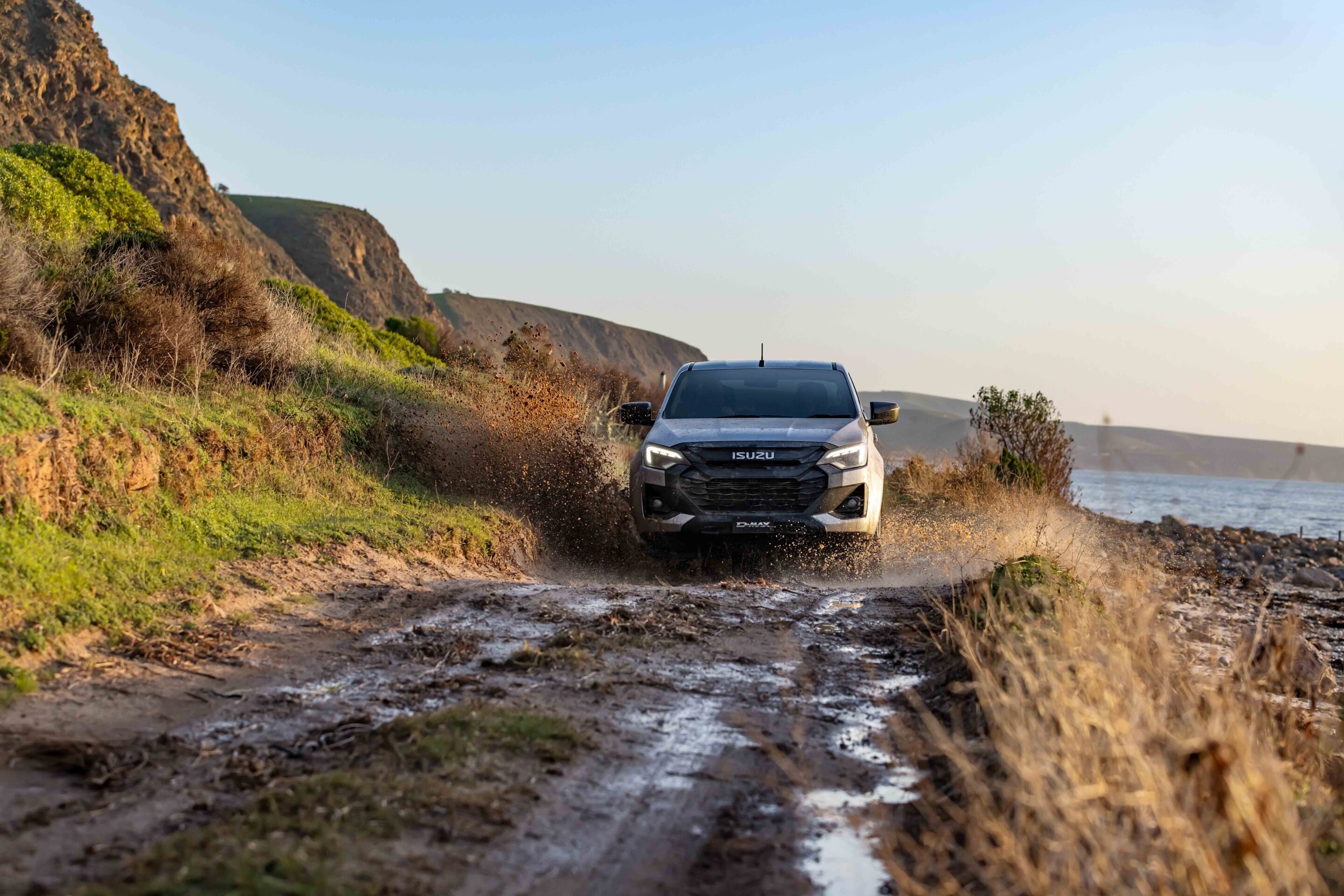
2026 Isuzu D-MAX pricing
| Model | Engine / Transmission | Price (AUD) |
|---|---|---|
| Single Cab Chassis SX | 3.0L AT | $46,200 |
| Space Cab Chassis SX | 3.0L AT | $49,700 |
| Crew Cab Chassis SX | 2.2L AT | $50,700 |
| Crew Cab Chassis SX | 3.0L AT | $52,700 |
| Crew Cab Chassis SX | 3.0L AT | $53,200 |
| Crew Cab Chassis LS-U | 3.0L AT | $63,500 |
| Crew Ute SX | 2.2L AT | $52,200 |
| Crew Ute SX | 3.0L AT | $54,200 |
| Crew Ute LSM X-RIDER | 2.2L AT | $59,500 |
| Crew Ute LSM X-RIDER | 3.0L AT | $61,500 |
| Crew Ute LS-U | 3.0L AT | $65,000 |
| Crew Ute LS-U+ | 3.0L AT | $68,000 |
| Crew Ute X-TERRAIN | 3.0L AT | $73,000 |
| Crew Ute BLADE | 3.0L AT | $80,900 |
2026 Isuzu MU-X pricing
| Model | Engine / Transmission | Price (AUD) |
|---|---|---|
| LS-M | 2.2L AT | $55,900 |
| LS-M | 3.0L AT | $57,900 |
| LS-U | 2.2L AT | $62,900 |
| LS-U | 3.0L AT | $64,900 |
| LS-T | 2.2L AT | $71,400 |
| LS-T | 3.0L AT | $73,400 |
| X-TERRAIN | 3.0L AT | $77,100 |
We recommend
-
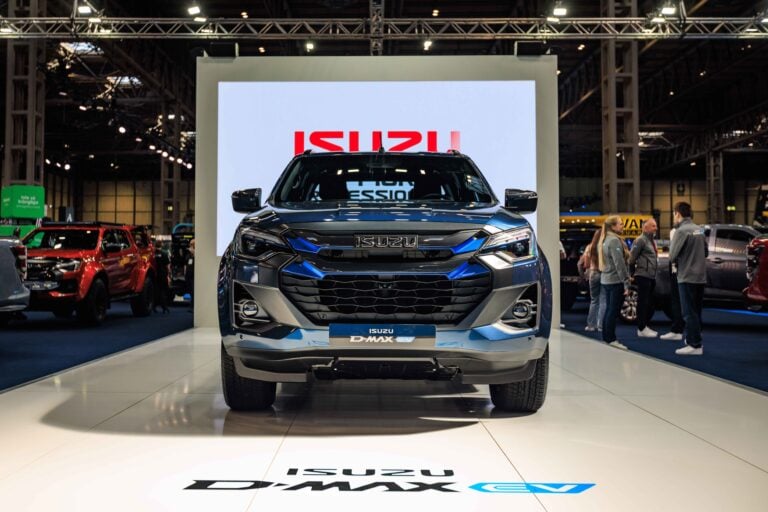 News
NewsIsuzu D-MAX EV priced from £59,995 in the UK – would you pay over $100K for one in Australia?
Isuzu’s all-electric D-MAX starts at £59,995 in the UK, with Aussie pricing expected to top $110,000 if and when it comes here
-
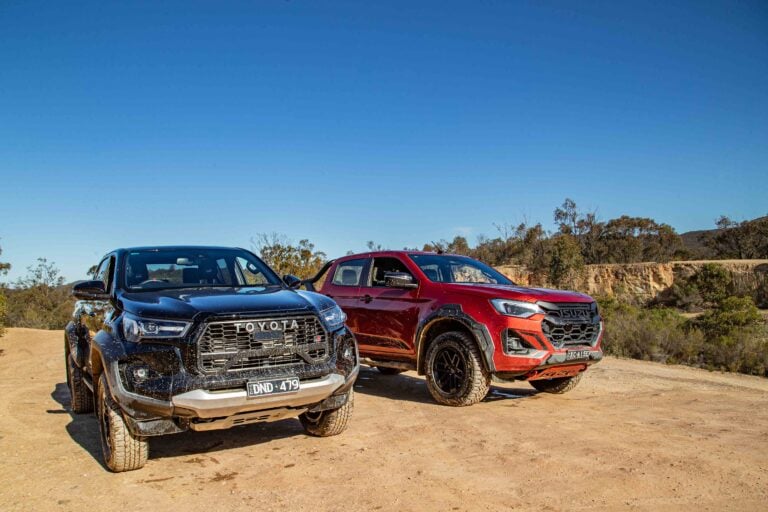 4x4 Comparisons
4x4 ComparisonsIsuzu D-MAX Blade vs Toyota HiLux GR Sport: Which flagship ute tows and tours better?
D-MAX Blade takes on HiLux GR Sport in a showdown to see which ute is best for towing and touring
-
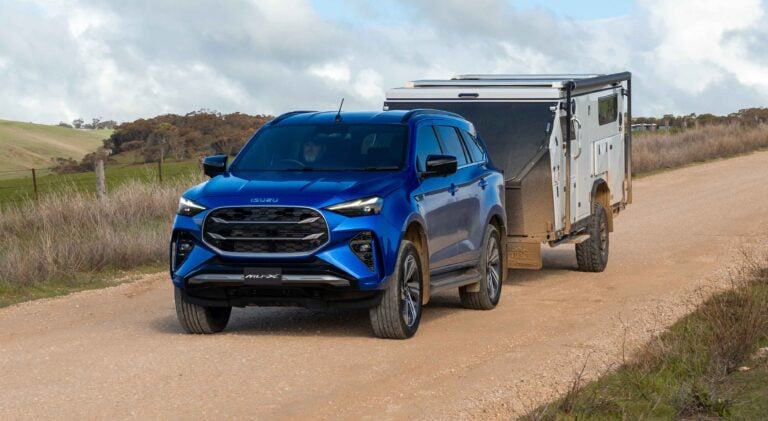 News
News2026 Isuzu D-MAX and MU-X get new 2.2-litre engine and eight-speed auto
Isuzu Ute Australia has introduced a more efficient 2.2-litre diesel with an eight-speed auto for the 2026 D-Max and MU-X range


